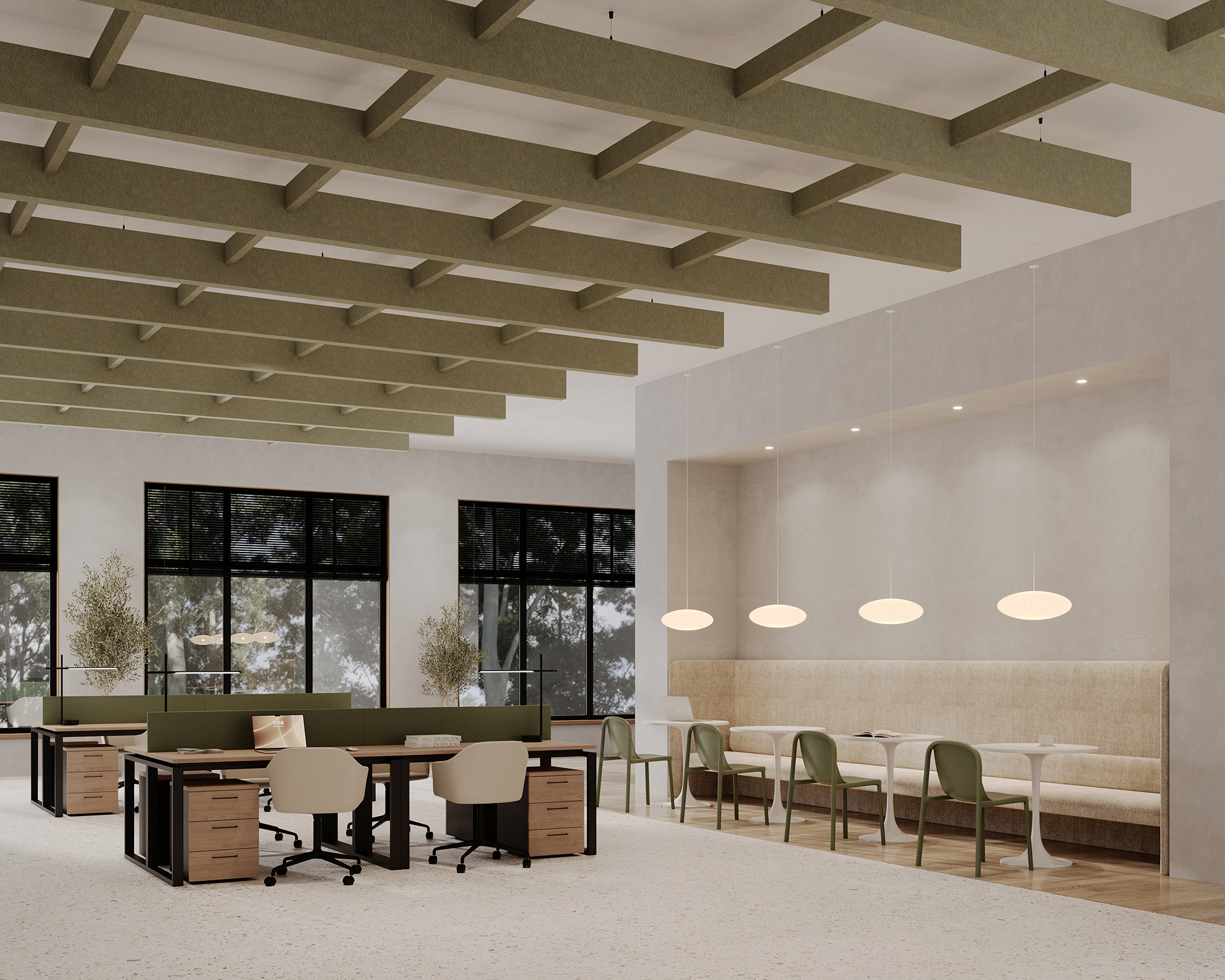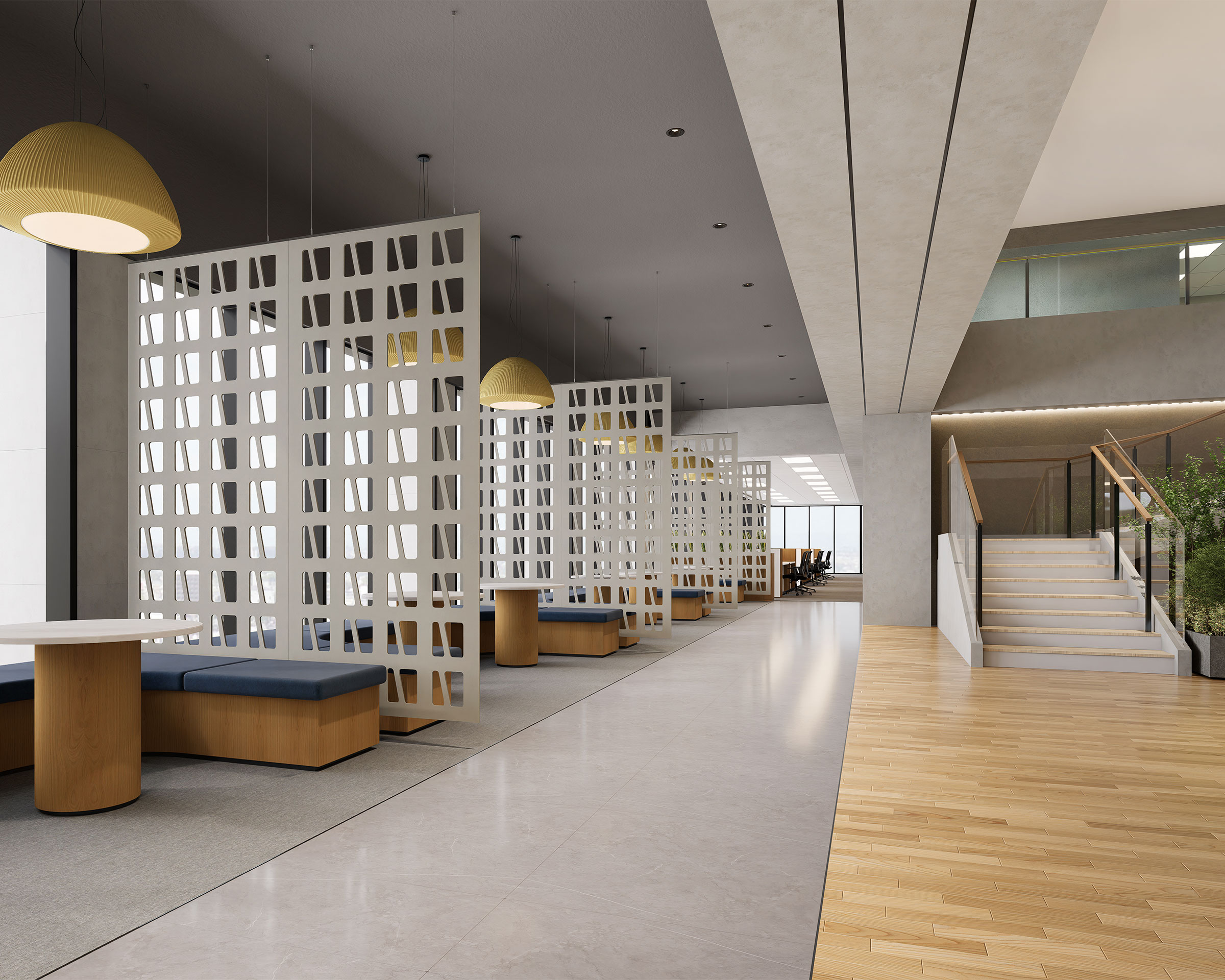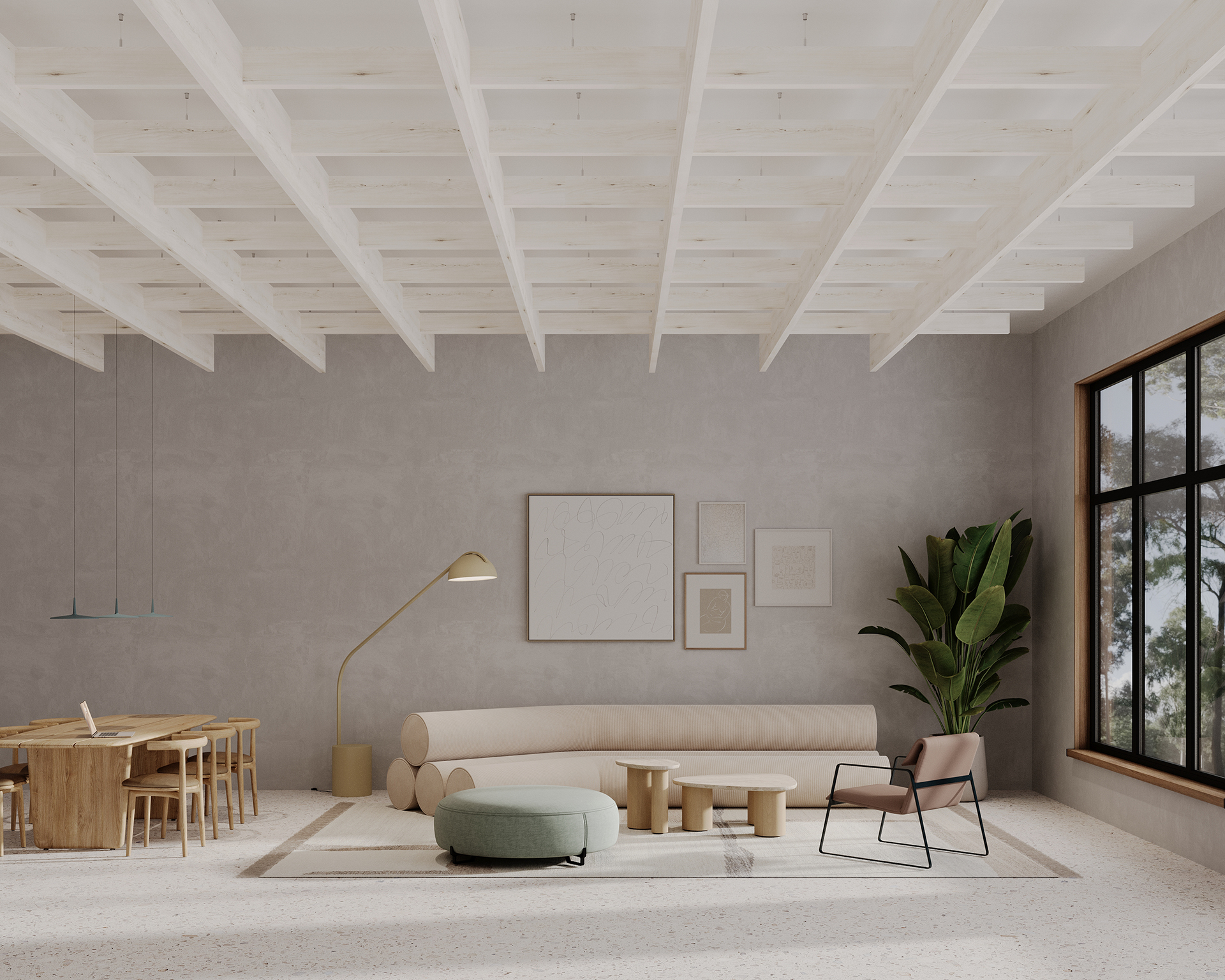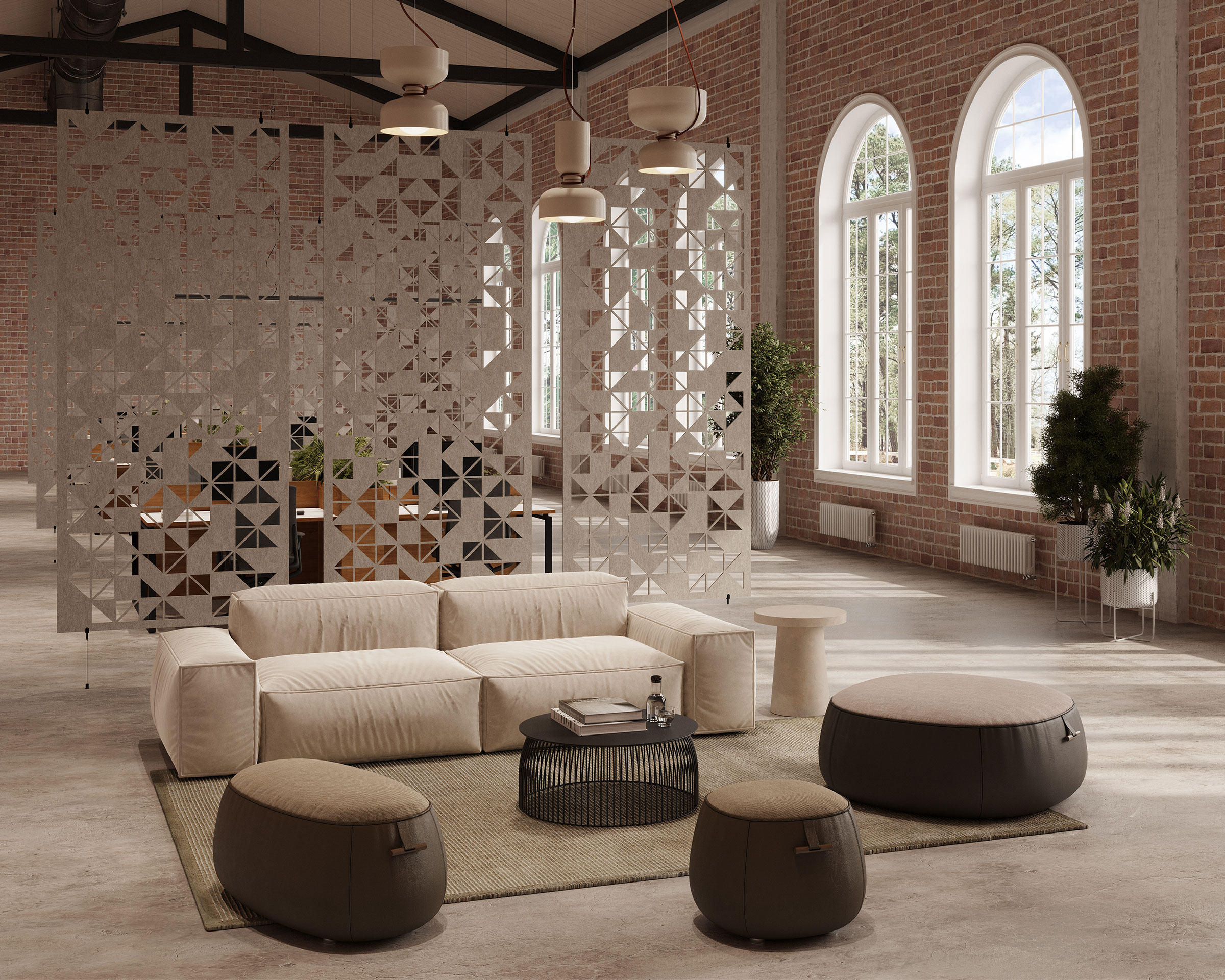Why acoustics are essential in hospitality design
In hospitality design, every detail contributes to the guest experience, from lighting and furniture to color and layout. Yet one crucial factor is often overlooked: acoustics. Sound plays a significant role in shaping how guests feel, interact, and remember a hospitality space.
Poor acoustics can lead to excessive noise, lack of privacy, and discomfort, ultimately affecting customer satisfaction and even revenue. On the other hand, well-designed acoustic solutions can enhance relaxation in hotel lobbies, improve speech clarity in restaurants, and create an inviting atmosphere in lounges and event spaces.
As the industry evolves, hospitality spaces must integrate acoustic strategies that balance aesthetics with function. Here are a few ways to ensure guests enjoy not just what they see but also what they hear in different hospitality spaces:

HOTEL LOBBIES
Managing echo and creating calm
Large, open hotel lobbies often struggle with excessive echo and noise reverberation, making the space feel chaotic and overwhelming, especially in high-traffic areas. Guests checking in or engaging in conversations may find it difficult to hear clearly or feel at ease in such an environment. And as open-plan layouts continue to dominate hotel design, managing sound effectively is crucial for creating functional spaces that serve multiple purposes.
Start with mapping out sound zones to determine acoustic treatments. A hotel lobby may need clear acoustics in the reception area while maintaining softer, ambient noise in bar spaces and communal areas. Once you’ve mapped out sound zones, consider using products that not only enhance acoustics but also help define spaces. Framework Ceiling Grids can help define large spaces from above, while Creative Cut Wall Screens partition areas with style, offering both visual separation and acoustic performance.
RESTAURANTS
Enhancing speech clarity and dining experience
In restaurants, one of the biggest challenges is managing noise levels while maintaining a lively yet intimate atmosphere. High noise levels or poor speech clarity can detract from the dining experience, making it harder for guests to converse and enjoy their meals.
Products like structured Waffle Ceiling Frames or classic Beveled Wall Panels are ideal solutions to control reverberation and enhance speech clarity. These products are not only functional but also visually interesting, adding a sophisticated element to the space. With the right acoustic treatments, restaurants can ensure both comfort and ambiance are elevated, contributing to a memorable dining experience.
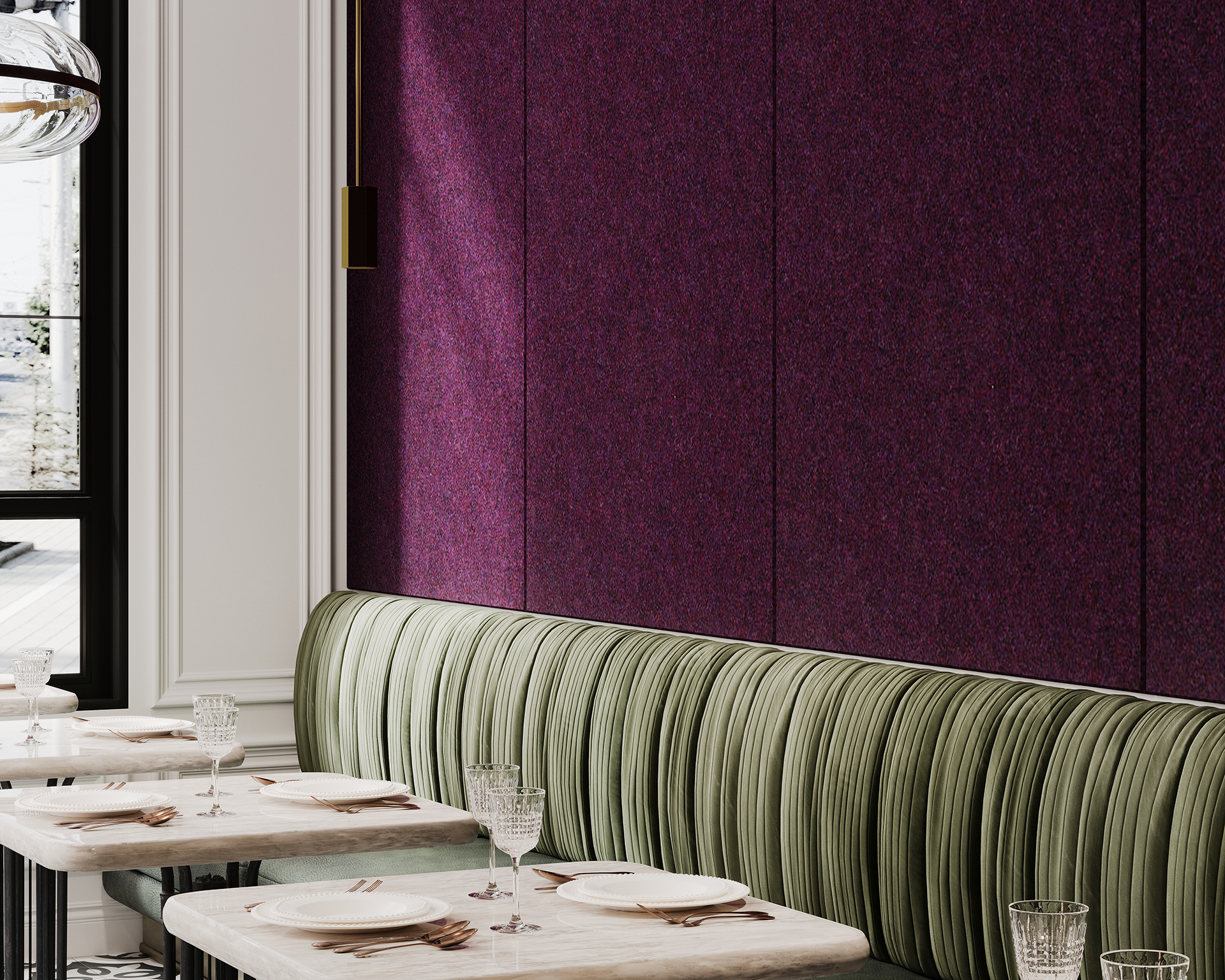
BARS AND LOUNGES
Balancing energy and noise control
Bars and lounges require a different approach, where the goal is to manage noise while allowing for more energetic social interaction. If sound levels are too high, guests may struggle to communicate, but if the environment is too quiet, the lively atmosphere can feel stagnant.
Ceiling baffles like Breeze and Billow, suspended from the ceiling, are an excellent way to manage noise levels in these high-energy spaces and help bring a dynamic aesthetic. Plus, focusing on ceiling treatments is key in these bustling environments, offering an effective way to control reverberation without taking up valuable floor space or worrying about wear and tear. With the right balance, bars and lounges can foster a vibrant atmosphere where guests feel engaged without the discomfort of excessive noise.

Incorporating natural elements for a calming hospitality atmosphere
Acoustic design in hospitality can also take inspiration from biophilic principles, which emphasize natural materials and organic forms to foster a sense of tranquility. Materials that mimic the calming qualities of nature, such as prints from our WoodGrain Collection or organic shapes like our Versiform Ceiling Baffles. These products not only enhance aesthetics but also contribute to a more restful and inviting atmosphere. So thoughtfully selected acoustic materials can soften harsh noises, improve guest well-being, and create spaces that feel both refined and welcoming.
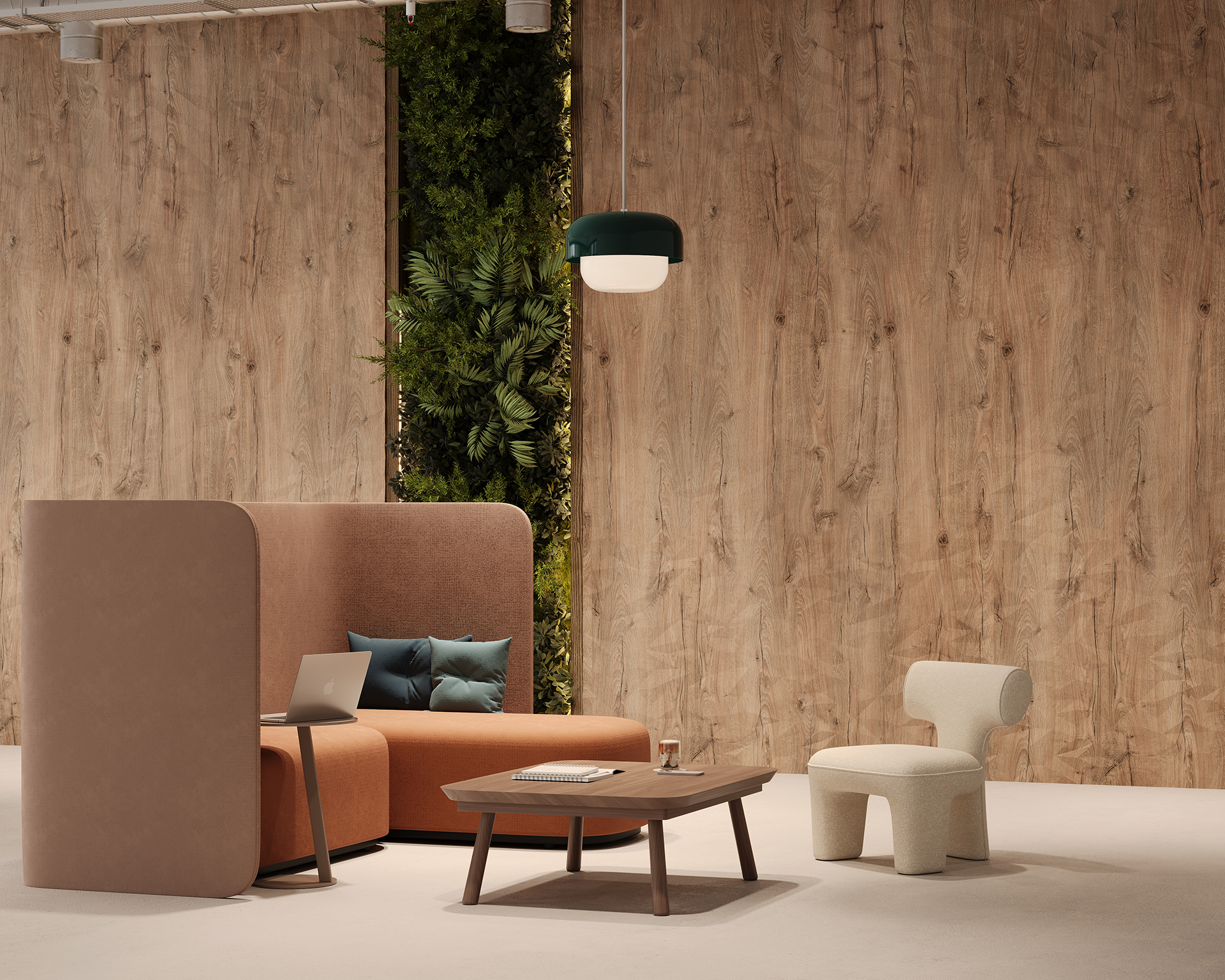
Eco-friendly choices for hospitality design
Sustainability is now a key priority in hospitality design, and acoustics play an essential role in this effort. Choosing acoustic solutions made from recycled, renewable, or low-impact materials helps reduce a venue’s environmental footprint while maintaining high-performance sound control.
Acoufelt’s Premier and WoodGrain products, for example, are crafted from FilaSorb™, a material made from 60% recycled PET and manufactured with up to 40% renewable energy. These products meet Environmental Product Declarations and Health Product Declarations to support sustainable hospitality initiatives. Plus, our products meet rigorous environmental and safety standards including SCS Indoor Advantage Gold Certification and Declare LBC Red List Free status and can contribute points towards LEED and WELL certification.

Shaping the future of hospitality design
At Acoufelt, we know that exceptional hospitality design goes beyond aesthetics—it’s about creating an immersive experience. Our acoustic solutions seamlessly blend style and function, enhancing guest comfort while optimizing sound. By designing spaces that balance ambiance and clarity, we’re helping to shape the next generation of hospitality environments.
